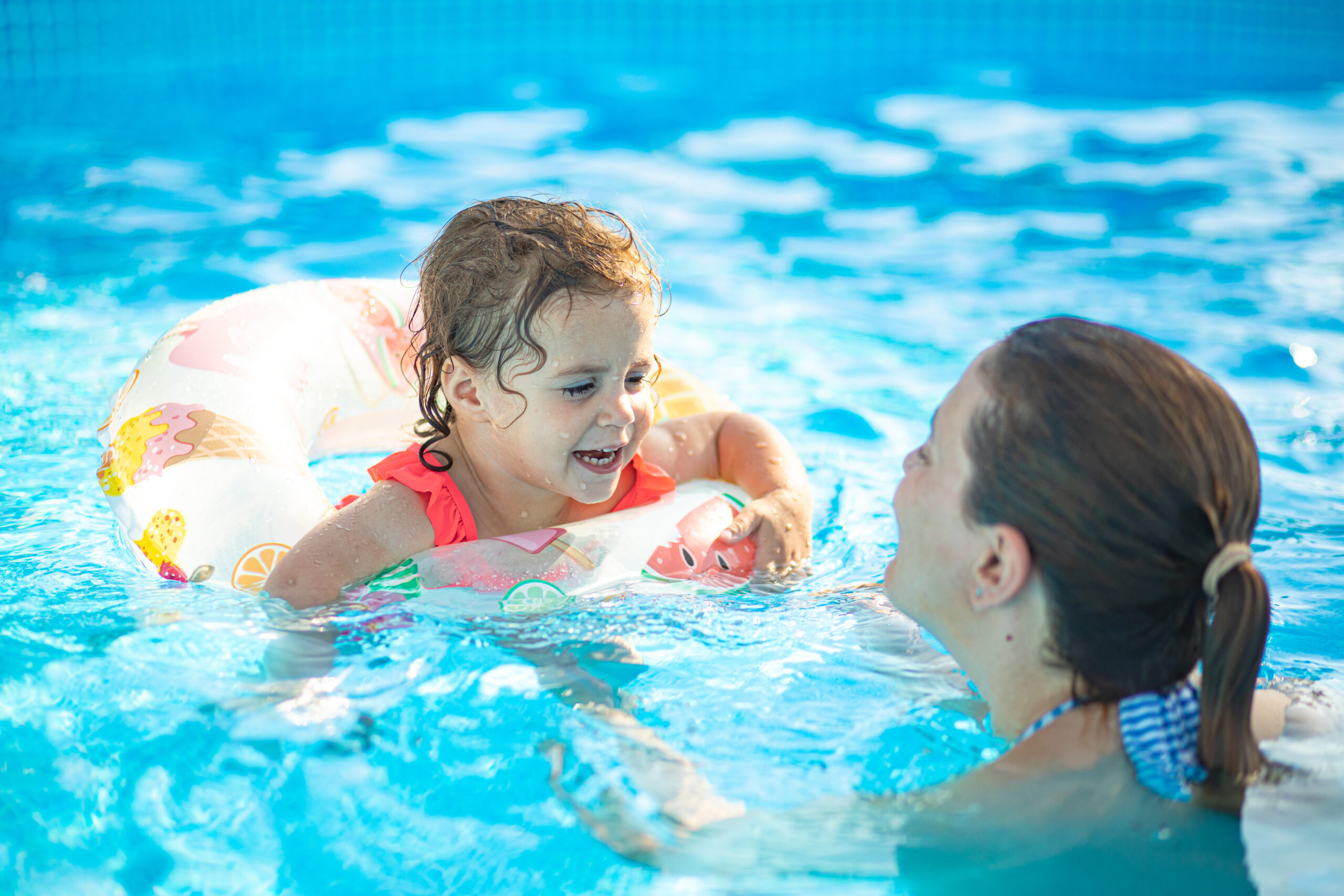Autistic children often love water because of its calming, sensory experience; however, children on the autism spectrum are 160 times more likely to drown than neurotypical children are. According to the Autism Society of Florida, nearly all fatal drownings for autism children are a result of wandering, eloping or missing from a caregiver.
Despite this, children with autism can still enjoy visits to the beach, pool, splash pad or waterpark on the proviso that parents take water safety precautions. The following are 12 tips to help you keep your child safe around the water:
- Swim lessons are a must. Contact local pools, YMCAs or CARD (Centers for Autism and Related Disabilities) for information on where to find lessons in your area. Take time to match the pool and lesson format with your child’s learning style. Swim Angelfish offers resources to parents and swim instructors on the particular needs of children with autism when it comes to water safety and swimming, including referrals. Visit the pool where lessons will occur first to get the sensory scene before lessons come into play.
- Emphasize the potential dangers of water. Even people with autism who are good swimmers may be attracted to water and wind up in dangerous situations, such as rivers or oceans with strong currents. As you educate your autistic child about water safety, make sure your child fully understands the potential dangers associated with water.
- Utilize visual aids. When teaching your child about pool safety, use visuals that explain expectations in the pool, like laminated photographs that can come with you in the water. This video offers great tips for walking an older, anxious, non-verbal autistic child through the pool.
- Start slowly, using sensory integration. Try to ease your child into the water without rushing. For example, try putting their feet into the water from the side of the pool, lingering on steps, and gradually moving deeper while spending time alongside your child in the pool.
- Create water rules. Children with autism often enjoy rules so they understand clearly defined boundaries and expectations. For example: never swim without an adult nearby; always tell the adult where you are going; no diving and no swimming alone.
- Take care to prevent wandering. If you have a pool, place chimes on doors and be sure to lock access points around pools; try placing “stop” signs on all doors leading outside. When in public, keep a close eye on your child at all times.
- Use brightly colored swimwear. Pools and beaches become busy and crowded, and lakes get dark in the evening. To counteract this, try using brightly colored swimwear to make supervision easier and ensure your child does not wander off. A swim shirt in a distinct neon color might be helpful to quickly identify where your child is. In addition, neon colored swimsuits are easier to spot when underwater as compared to blues or neutrals.
- Watch your child’s water “drinking.” Some swimmers enjoy drinking, sucking and spitting water. Watch the amount and number of times your child swallows water. If swimmers persist, try having them swim on their back.
- Try to monitor underwater breath holding. Some swimmers enjoy underwater swimming due to the sensation of hydrostatic pressure as they go deeper and deeper. This may accidentally trigger missed breathing. Try to visually monitor your swimmers and encourage them to take many breaks for above-the-surface play.
- Take and hold floating objects. When you take your child swimming, practice “take and hold” with any floating object like a kickboard or noodle. Familiarize swimmers with the rescue tube and equipment. (Rescue water safety tubes have a slippery surface that can be uncomfortable to touch or hold onto, so practice is necessary. Try to use during land-based playtime.)
- Slowly submerge. Successful submerging will come with time. Start with certain body parts like “mouth, nose, eyes and hair,” and then say “under.” Try wiping your child’s face upon emerging to help desensitize the face.
- Shallow vs. deep. Teach swimmers the mantra, “in the shallow we ‘stand’ and in the deep we ‘just keep swimming.’” Gradually build up your child’s confidence in deeper bodies of water.
Facing summer with an autistic child and water settings that make you both nervous? With some precautious and water safety training, you and your autistic child can enjoy the water safely, all summer long.



